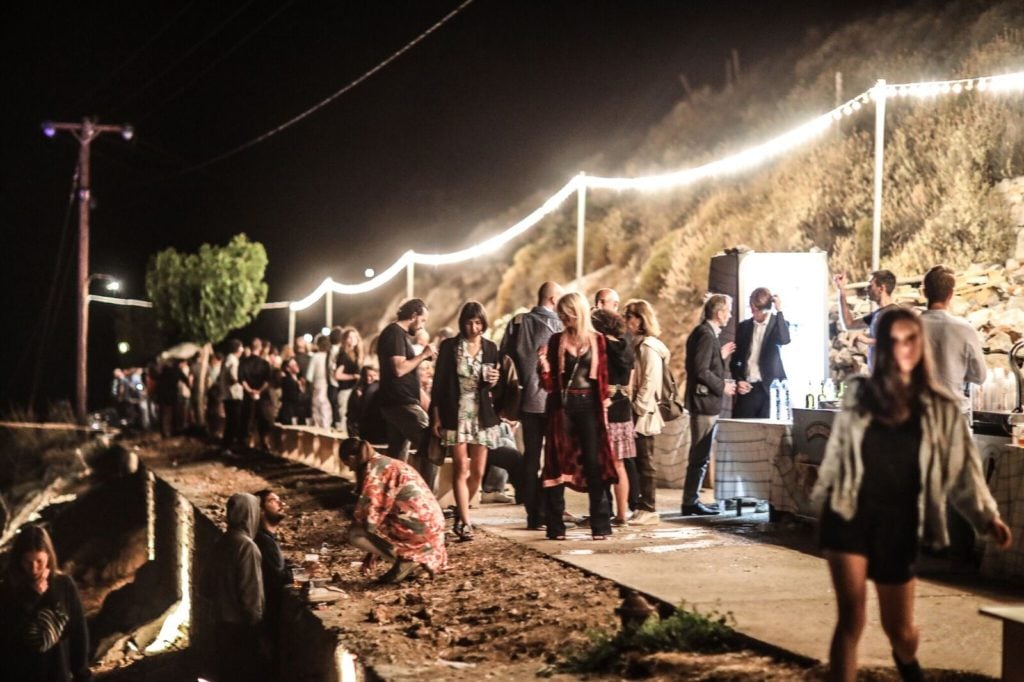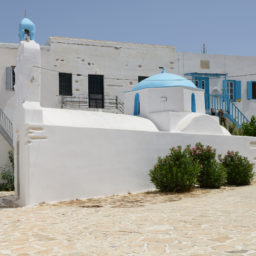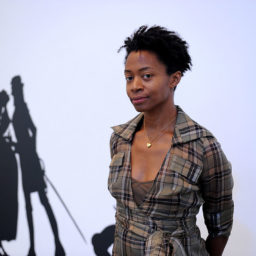Even in a highly touristed city, you can spot a member of the art world from a mile away. On the tiny island of Hydra in Greece’s Argo Saronic Gulf, the giveaways include biennial-branded tote bags and tailored navy-blue blazers worn in the dead of summer.
Hundreds of these tote-toting types, from artists Maurizio Cattelan and David Shrigley to curator Cecilia Alemani and architect Elizabeth Diller, arrived on Hydra this week by ferry and private yacht for the epic beachside vernissage hosted annually by Greek collector Dakis Joannou. The party marks the opening of the summer exhibition at his DESTE Foundation’s project space, housed in a former slaughterhouse and perched on the edge of a cliff overlooking the Aegean.
This year, the space had been given over to Figa, the disembodied left hand and sole remnant of the giant sugar sphinx at the center of Kara Walker’s groundbreaking public sculpture installation, A Subtlety. Sculpted with its thumb pinched between its index and middle fingers, the hand is fashioned into the ancient “fig” gesture, a profane symbol of fertility; the rest of the sphinx was destroyed after its debut at the Domino Sugar Factory in Brooklyn in 2014.
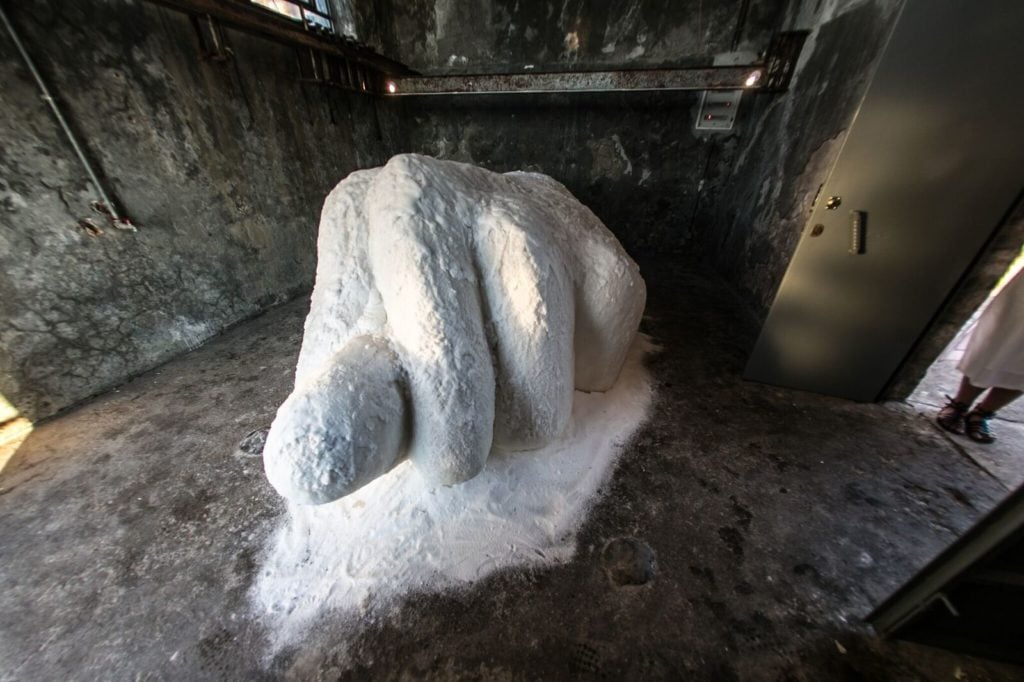
A portion of Kara Walker’s A Subtlety, or the Marvelous Sugar Baby (2014) at the DESTE Foundation in Hydra. Photo © Maria Markezi.
Joannou’s party regularly marks the very last stop on the art world’s annual calendar, and this year had the special distinction of being a “superkunstyear.“ It’s a term that describes a kind of art-world blue moon in which the stars align and the quinquennial documenta coincides with the Venice Biennale and decennial public sculpture exhibition Skulptur Projekte Münster.
In Greece this week, the migration came full circle. It had begun in Athens with the first portion of documenta 14, which opened in April. Joannou’s party marked the beginning of the end—or at least “the start of me not having to do anything specific,” as Venice-based exhibition manager Alessandro Possati put it at the party on Monday night. He had hit every mark on the protracted European tour, with additional detours to both Copenhagen and Zürich somehow squeezed between Basel and Hydra, and was exhausted and partially filled with regret.
“You might go somewhere everyone is raving about and realize it’s not worth going to everything and the kitchen sink,” Possati said. “I wish somebody had told me some parts of Germany were less…,” he began to say, unsure of where that sentence should go. (By then, we were already three hours and an unknown number of glasses of wine into the party.)
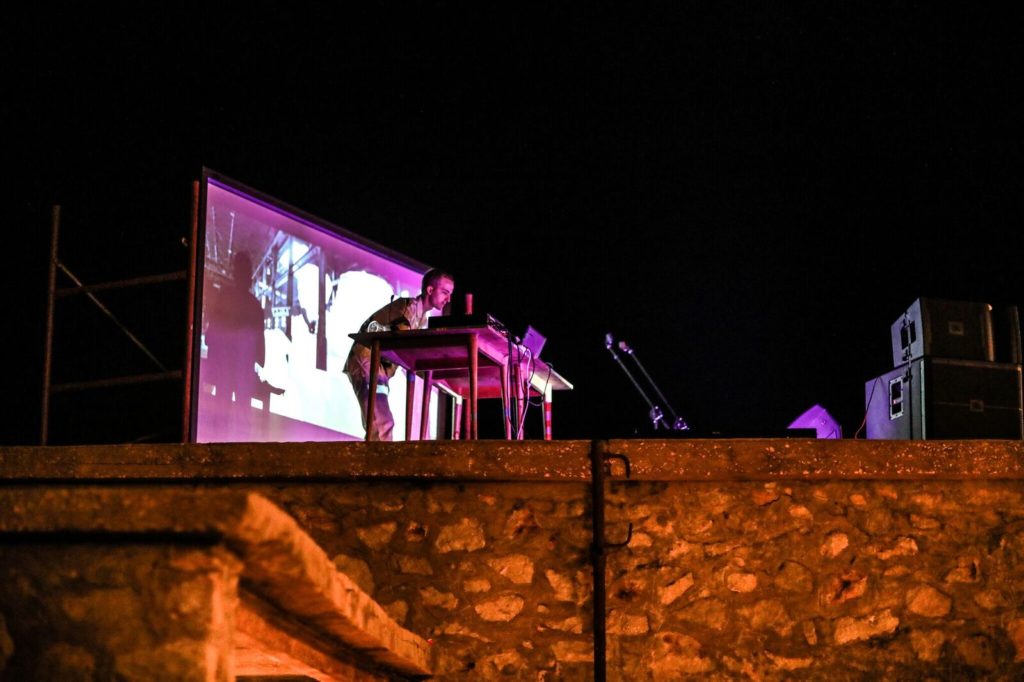
A performance at the opening of Kara Walker’s Figa at DESTE’s project space in Hydra. Photo © Maria Markezi.
The ambivalence has been mutual. Of documenta 14 and the art world’s descent on Greece, artist and art historian Navine G. Khan-Dossos, who moved to Athens from London two years ago, said, “You have to remember this is all a one-off, like the Olympic games of 2004. Honestly, most people are waiting for it to be over.”
“The art scene in Athens is Greek, and the art world is a caravan,” she added. “There’s been so much going on in Athens before documenta arrived that’s already been validated. This is the one year maybe they pulled out all the stops to make space for the caravan to arrive. The question now is its legacy, and what happens afterwards.”
As a result of the Superkunstyear, the caravan had only gotten bigger. Representatives from Deste estimate that approximately 800 guests came through, and the almost-400-foot-long table that in years past sat 400 guests became suddenly unfeasible. Instead, it was converted into an endless buffet of stuffed grape leaves, grilled meat, and plastic cups of beer and wine that seemed to be perpetually refilled.
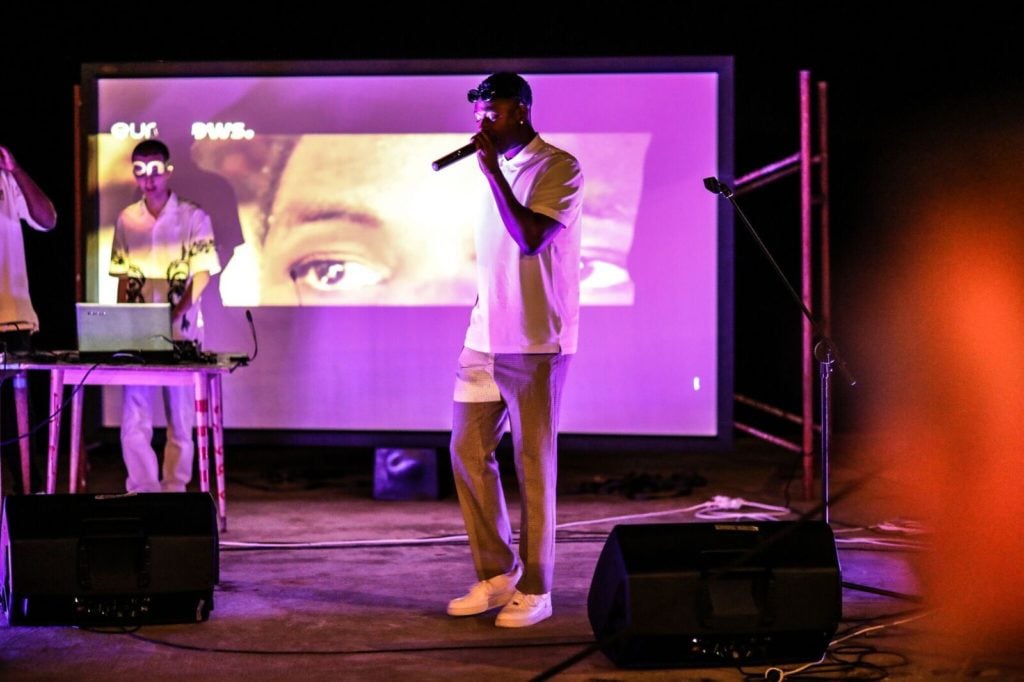
A video shot by the artist, accompanied by a performance at the project opening in Hydra. Photo© Maria Markezi.
Despite travel fatigue, spirits were high. Guests scaled the rocks to perch and smoke cigarettes, and the curator and artist Lola Montes Schnabel, whose work is on view now at the local exhibition space Hydra School Projects, extolled the rejuvenating powers of the Mediterranean saltwater.
“It purifies anything that you’ve been around,” she said. “After all those art fairs, it’s the perfect place to take a dose of magnesium to take off all those conversations.” Joannou greeted his guests wearing a t-shirt that read “Love Everyone,” while his Jeff Koons-designed yacht, named Guilty, sat docked in the port nearby with its strobe lights on.
The light shifted from deep gold to bruised orange-and-purples, and a line formed along the water’s edge to enter Joannou’s converted stone slaughterhouse. Inside, there was enough room to circle the sculpture completely, but only if viewers lined up single-file. (Walker, who was in attendance but declined to speak to press, had instructed guests to view the work from every angle.)
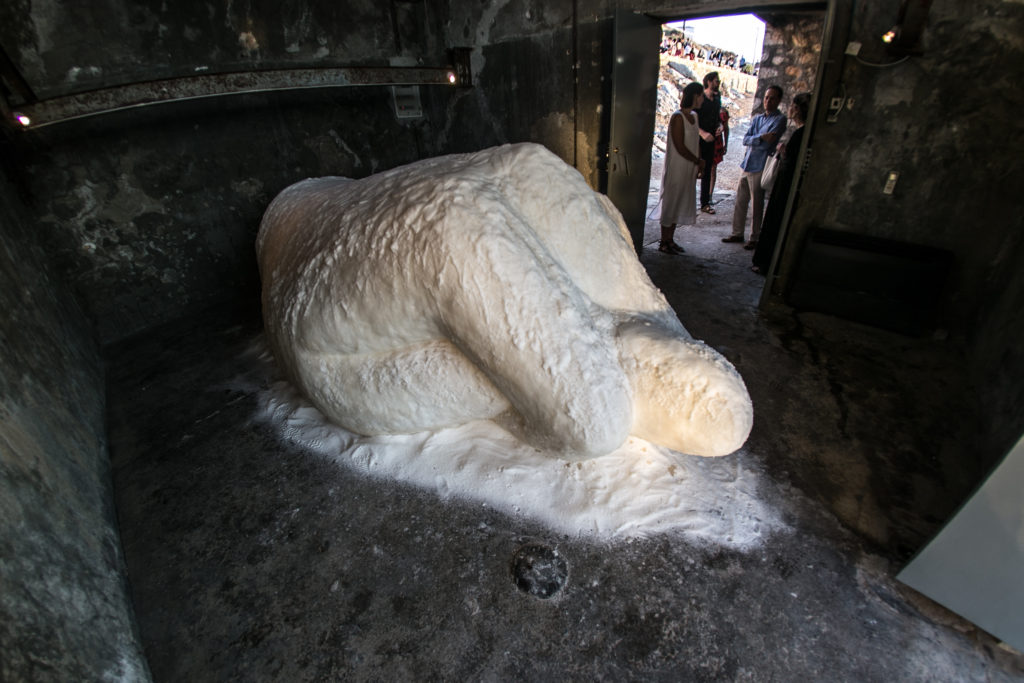
A portion of Kara Walker’s A Subtlety, or the Marvelous Sugar Baby (2014) at the DESTE Foundation in Hydra. Photo © Maria Markezi.
The Sphinx’s hand lay palm-down in a pile of sugar; the hand itself had also been coated with additional layers of sugar ahead of its Greek debut. The end of its wrist was smooth—a clean break, a bloodless amputation from a body that has been destroyed.
In the New World (also known as Brooklyn), Walker’s work evoked the contemporary reverberations of a dark history, one that began with slave ships crossing the sea. Here, it became a relic, comfortably at home in a land of truncated antiquities.
Acknowledging Greece’s contemporary struggles, Walker presented her sculpture alongside footage of the refugee crisis, including migrants from sinking boats washing onto nearby shores. It played on a screen installed on the roof of the slaughterhouse during the DJ sets and live hip-hop performance by Athens-based cool collective Ath Kids. The thoughtful line drawn between the work and its new site was lost on this soignée summer barbecue.
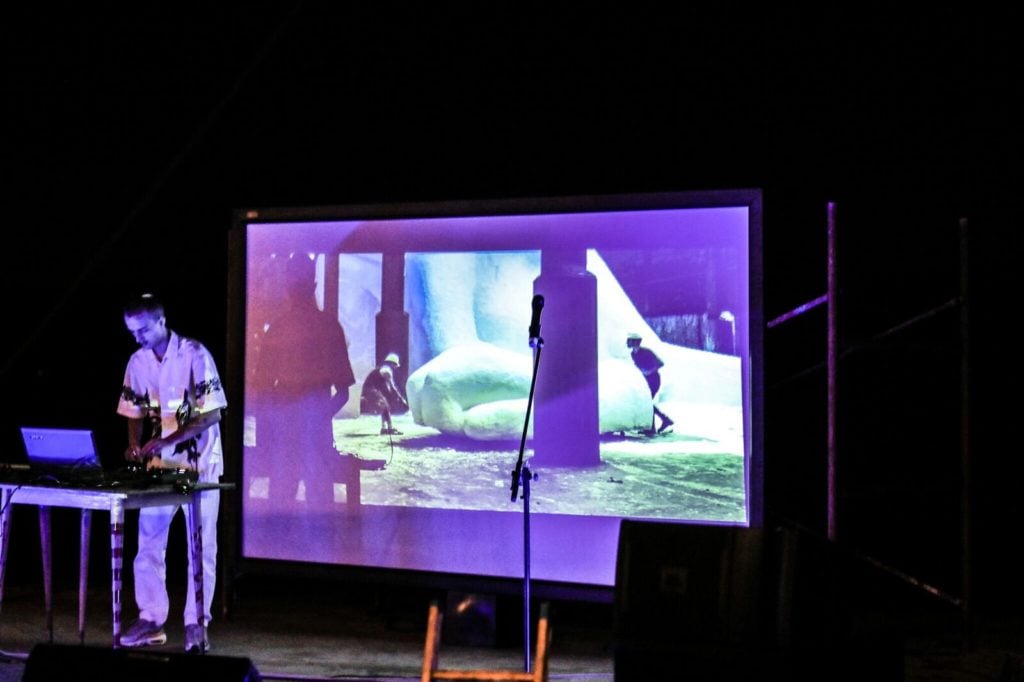
A DJ playing at the opening of Kara Walker’s Figa at DESTE’s project space in Hydra. Photo © Maria Markezi.
“We’re all kinds of art refugees ourselves, you know?” one partygoer said to me with no detectable trace of irony, exasperating the dissonance. The sky had faded from navy blue to black, and there was cigarette smoke in the air.
When the DJs departed, they left a playlist that consisted mainly of Drake songs. About a quarter of the guests stayed on the newly converted cliffside dance floor, while the rest of the party wandered back into town, convening at the perennially reliable Pirate Bar. The next morning, Guilty had left the port and the caravan had moved on.
“Kara Walker – Figa” at the Deste Foundation Project Space, Slaughterhouse, Hydra, June 20–September 30
